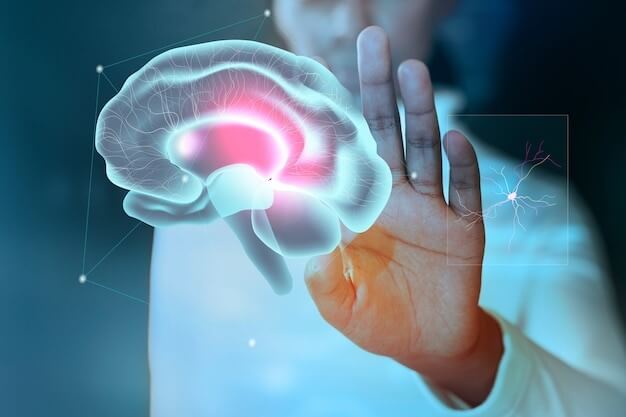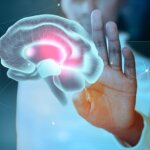Overview of the Breakthrough Treatment for Dystonia
Dystonia is a neurological movement disorder characterized by involuntary and abnormal muscle contractions, leading to twisting movements, unusual postures, and, at times, pain. While dystonia currently has no cure, deep brain stimulation (DBS) stands out as a highly effective and advanced treatment option. This innovative therapy involves implanting electrodes deep within specific brain regions to modulate abnormal nerve signals causing involuntary muscle contractions. The Department of Neurological Surgery at Jaslok Hospital has revolutionized dystonia management by providing the best deep brain stimulation surgery in India, offering hope to those unresponsive to conventional treatments. The procedure’s precision and adjustability make it a dynamic therapeutic approach. Exploring the transformative impact of DBS on dystonia not only underscores medical progress but also highlights the potential for advancements in neurological interventions that can significantly enhance the quality of life for individuals facing movement disorders.
Understanding Dystonia
Dystonia is a neurological disorder that manifests as involuntary muscle contractions, leading to repetitive movements or abnormal postures. It can affect specific body regions or be generalized. The exact cause is often unknown, but genetics and environmental factors may contribute. Dystonia’s impact ranges from mild discomfort to severe disability. Treatments may include medications, physical therapy, and, for some, innovative interventions like Deep Brain Stimulation (DBS).
History and Evolution of DBS in Neurological Disorders
Deep Brain Stimulation (DBS) has evolved as a transformative intervention in neurological disorders. Initially used for movement disorders like Parkinson’s disease, DBS dates back to the late 20th century. Its success prompted the exploration of treating various neurological conditions, including dystonia and essential tremors. DBS’s refined techniques and expanded applications showcase its dynamic evolution, revolutionizing the landscape of neurological therapies.
DBS as a Revolutionary Intervention in Dystonia
DBS stands as a revolutionary intervention for dystonia, addressing involuntary muscle contractions. Electrodes implanted in specific brain regions modulate abnormal nerve signals, significantly alleviating symptoms. DBS’s precision and adaptability make it a breakthrough for dystonia patients unresponsive to conventional treatments, offering newfound hope and improved quality of life for those grappling with this challenging neurological disorder.
Mechanism of DBS in Alleviating Dystonic Symptoms
DBS alleviates dystonic symptoms by modulating abnormal neural signals. Electrodes surgically implanted in specific brain regions emit electrical pulses, disrupting and regulating the overactive signals causing involuntary muscle contractions. This neuromodulation reduces dystonic symptoms effectively. The adjustability and precision of DBS make it a promising therapeutic mechanism, offering substantial relief to individuals grappling with the challenges of dystonia.
Navigating the DBS Treatment Journey
Navigating the DBS treatment journey for dystonia involves a comprehensive process. Patients undergo thorough evaluations, including neurological assessments and imaging studies. After candidacy confirmation, a surgical procedure implants electrodes in precise brain regions. Post-surgery, the device is calibrated to optimize symptom control. Regular follow-ups ensure ongoing adjustments for maximum therapeutic benefit, creating a patient-centered and dynamic treatment journey.
Candidacy and Selection Process for DBS
The candidacy and selection process for DBS in dystonia involves meticulous evaluations. Neurological assessments, imaging studies, and responses to medications determine eligibility. Patients with inadequately controlled symptoms and preserved cognitive function are typically selected. The multidisciplinary team collaborates to ensure suitability, emphasizing personalized care in identifying individuals who can benefit most from this innovative and transformative intervention.
Preparing for DBS Surgery: Expectations and Considerations
Preparing for DBS surgery involves setting realistic expectations and considering potential risks. Patients undergo thorough evaluations, ensuring candidacy. They should understand potential benefits and actively participate in decision-making. Pre-surgery assessments, including neurological and psychiatric evaluations, guide the process. Counseling and educational resources provide insight, fostering informed decisions and comprehensive preparation for this innovative intervention.
Prepare and Target Localization
Preparing for DBS surgery involves precise target localization. Advanced imaging, such as MRI and CT scans, aids in identifying optimal brain regions for electrode placement. The surgical team utilizes this information to plan the procedure meticulously. Patient preparation includes detailed preoperative assessments and discussions, ensuring accurate target localization and contributing to the success of DBS in alleviating dystonic symptoms.
Electrode Insertion and Confirmation
During DBS surgery, electrodes are carefully inserted into predetermined brain regions. Real-time imaging and patient feedback guides the surgical team to confirm optimal electrode placement. Electrophysiological testing ensures accurate targeting and minimizes side effects. This meticulous process ensures the effectiveness of DBS in modulating neural signals, alleviating dystonic symptoms, and enhancing patient outcomes.
Implantable Pulse Generator Placement and Closure
After precise electrode insertion, the implantable pulse generator (IPG) is placed subcutaneously, usually in the chest or abdomen. The IPG generates electrical pulses that travel through the electrodes to modulate neural signals. The incisions are closed and patients undergo postoperative assessments to ensure proper device functioning. This comprehensive process finalizes the DBS treatment journey.
Postoperative Care and Rehabilitation
Postoperative care and rehabilitation following DBS surgery involve meticulous monitoring and gradual adjustments. Regular follow-ups assess device functionality and optimize settings for symptom control. Physical and occupational therapy aids in rehabilitation, ensuring the gradual integration of improved motor function. This ongoing care promotes patient adaptation to the benefits of DBS, enhancing the overall success of the intervention in managing dystonia symptoms.
Living with DBS: Life After Treatment
Living with DBS involves adapting to improved symptom control. Patients experience enhanced quality of life and increased independence. Regular follow-ups ensure optimal device functioning, with occasional adjustments. Although some restrictions may apply, most individuals resume daily activities, emphasizing the transformative impact of DBS on their lives, fostering long-term well-being and improved functional abilities.
Adjusted to DBS: Early Days and Milestones
Adjusting to DBS in the early days involves monitoring symptom changes and gradual adaptations. Patients may experience initial improvements, with further refinements in follow-up appointments. Milestones, such as enhanced motor control and reduced dystonic symptoms, mark successful adjustments. The evolving positive impact of DBS becomes evident, reflecting its transformative role in improving daily functioning and overall quality of life.
Integrating DBS with Daily Activities
Integrating DBS with daily activities requires adapting to newfound symptom control. Patients, guided by regular follow-ups, gradually resume routines. Adjustments ensure optimal device functioning. While some precautions may apply, individuals typically regain independence by engaging in work, social, and recreational activities. This integration underscores DBS’s transformative impact, allowing patients to navigate life with improved functionality and reduced dystonic symptoms.
Potential Risks and Long-term Outcomes
DBS has potential risks, including infection, bleeding, or device malfunction. Long-term outcomes vary; while many experience sustained symptom control, others may require ongoing adjustments. DBS may not eliminate all symptoms, and side effects like speech or balance issues can occur. Regular follow-ups monitor device function and patient well-being, contributing to individualized management plans.
Addressing Concerns and Managing Side Effects
Addressing concerns and managing side effects in DBS involves open communication with doctors. Regular follow-ups allow for adjustments to optimize symptom control while minimizing adverse effects like speech or balance issues. Patients actively participating in their care and expressing concerns contribute to the success of DBS, fostering a patient-centered approach to managing dystonia.
Long-term Prognosis and Quality of Life
The long-term prognosis of DBS for dystonia varies. While many experience sustained symptom relief and improved quality of life, individual responses differ. Regular follow-ups are crucial for monitoring device functions and addressing evolving needs. DBS offers transformative potential, often enhancing long-term prognosis and providing individuals with a significantly improved quality of life, emphasizing its role in dystonia management.
Related: Top 10 Foods for Treating Movement Disorders
Best Deep Brain Stimulation Clinic in Mumbai
The Department of Neurological Surgery at Jaslok Hospital is recognized as the best deep brain stimulation clinic in Mumbai. The clinic provides cutting-edge therapies for neurological conditions like Parkinson’s disease, essential tremors, dystonia, and epilepsy thanks to a staff of knowledgeable and expert neurosurgeons. The clinic uses modern tools and cutting-edge technology to carry out precise deep brain stimulation procedures that enhance patients’ quality of life. The clinic is committed to offering thorough care and personalized treatment regimens to provide the greatest results for each patient.





